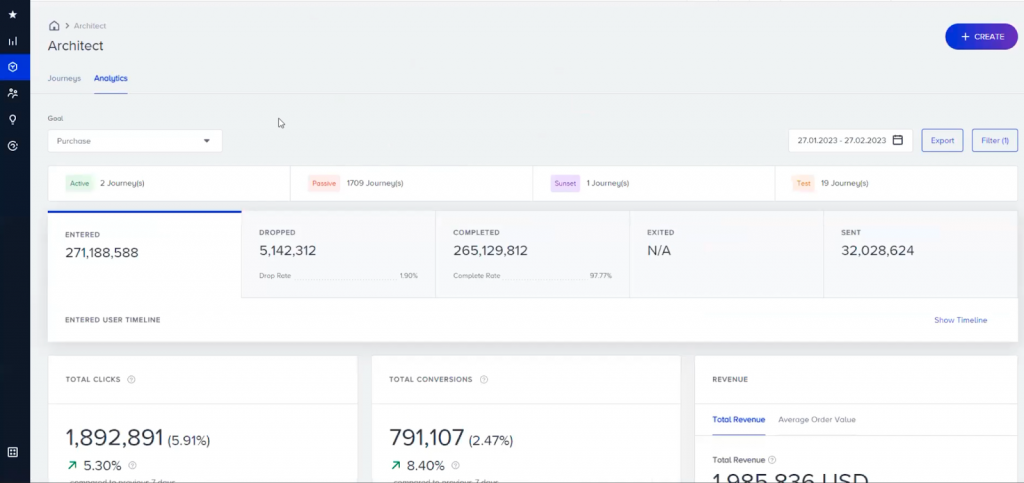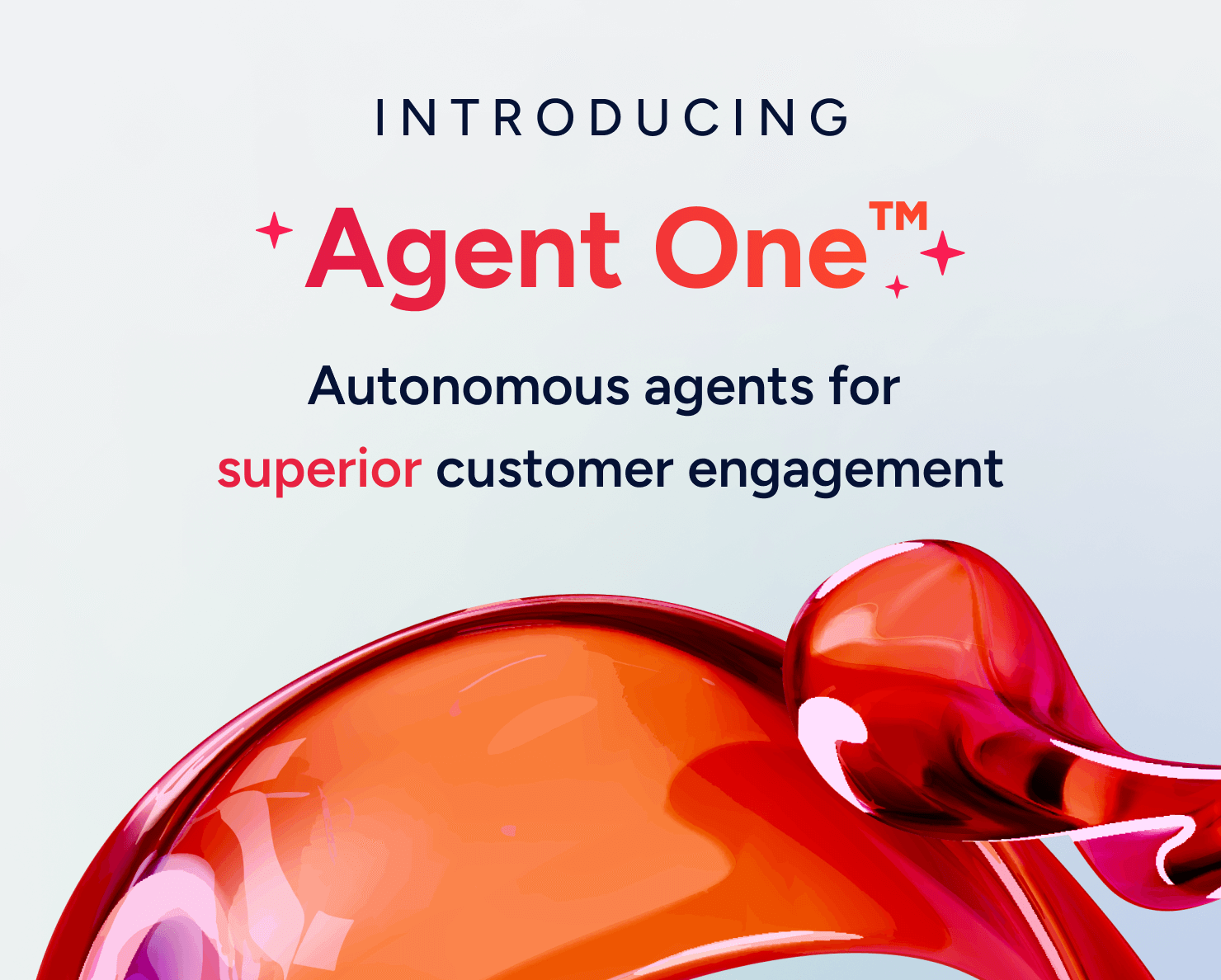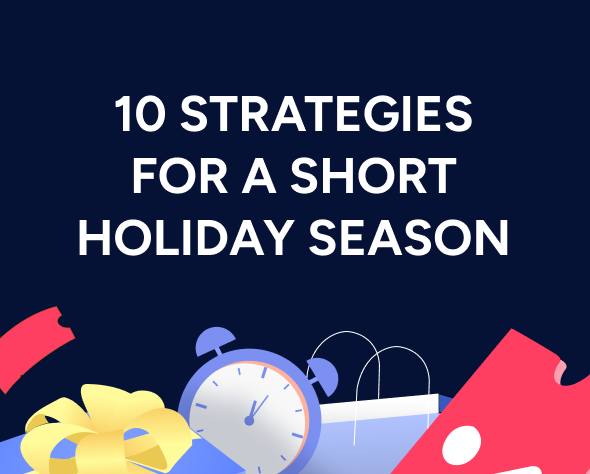5 Benefits of Using a CDP with Marketing Automation in 2026
Updated on 19 Nov 2025
In 2026, customer data platforms (CDPs) are more than just a repository for customer information; they are the foundation for truly unified, cross-channel marketing. But collecting data is only the first step. The real impact comes when you can activate that data, triggering personalized experiences automatically across channels.
That’s where marketing automation comes in. Historically, automation has been a separate tool. But today’s most effective platforms are combining CDP and automation into a single solution, making it easier for marketers to unify data and run intelligent, automated campaigns from one place.
In this guide, we’ll walk through five major benefits of using a CDP with built-in marketing automation supported by real examples from brands using Insider, our enterprise CDP and omnichannel automation solution.
See why leading brands trust Insider. Take our product tours at your own pace.
Why use a customer data platform in 2026?
CDPs are software solutions designed to aggregate customer data from various sources into a single database. The data sources can be both online and offline — like analytics tools, customer relationship management (CRM) systems, APIs, and PoS devices.
For example, our enterprise CDP can ingest data from any online and offline source. We have pre-built connectors for 100+ tools across 20+ categories, so teams can easily integrate the CDP with the rest of their marketing technology stack.

Today, CDPs are a must for many data-driven marketers because they solve the massive challenge of data silos. Instead of having to jump between and integrate different solutions, CDPs enable marketers to have all relevant campaign data in one convenient place.
CDPs use this data to create 360-degree customer views. These views contain everything you know about each customer — including their names, demographics, locations, phone numbers, purchases, website interactions, and much more.
If you’re working with a platform that offers AI-powered predictions, you’ll also get valuable predictive characteristics, such as likelihood to purchase, likelihood to engage on a specific channel, discount affinity, potential spending, and more.

Learn more: Everything you need to know about predictive marketing.
In short, CDPs give you the foundation for running data-driven, personalized, and high-converting marketing campaigns. Most of them also come with segmentation and analytics capabilities that help you target the right customers and analyze your results.

What is marketing automation & How it powers activation
Marketing automation is a broad term that encompasses tools and techniques used to automate workflows and streamline processes. You can find automation capabilities in most marketing and sales solutions, from simple email marketing tools to CRMs, content management systems (CMSs), and omnichannel platforms.
However, for an automation strategy (or any other marketing strategy) to produce the desired results, it needs to be based on reliable data. For instance, if you’re building an automated marketing campaign aimed at driving purchases, you’ll need to base it on:
- Customers’ needs, interests, and previous purchases.
- Their preferences in terms of channels and contact times.
- The results from previous similar campaigns.
- And other data points.
As we said, CDPs excel at putting that information together in one place. This makes it possible to build automated campaigns based on the full understanding you have of each customer, without missing key information.
Here are three quick examples of companies that used data-driven automation to achieve important business goals:
- Remix: This large retail company built a three-step automated email campaign aimed at educating new leads and nurturing them to make their first purchase. These guided data-driven journeys led to a 104% increase in first purchases compared to the previous quarter.

- Picniq: This travel brand used automated WhatsApp messages and journeys to recover lost revenue from browser abandoners and generate more return customers. These campaigns helped Picniq achieve an 80% open rate and 5x ROI from their WhatsApp efforts.

- Slazenger: This sportswear brand was looking to solve key challenges like reducing cart abandonments and enticing shoppers to return back to the site. To do that, they built automated and personalized journeys across web push, email, and SMS. The result was a 49x ROI in eight weeks and 40% recovered revenue in a single campaign.

Put simply, marketing automation platforms can use the unified data that CDPs hold to deliver relevant content, messages, and product recommendations at all stages of the customer journey.

What are the 5 key benefits of using a CDP with marketing automation capabilities
Traditional Data and Analytics CDPs were primarily built to aggregate customer data, resolve omnichannel identities, and pass that data to other platforms for activation. In short, they mostly focused on use cases like data management and consolidation, without offering activation channels or marketing automation tools.
As we said earlier, newer Campaign (or Activation) CDPs change that by adding automation and personalization tools as part of their offering. In the sections below, we’ll explore five essential benefits of this consolidated approach for digital marketing teams.
Note: For a more detailed explanation of the differences between these CDP types, check our guide to the best customer data platforms on the market.
#1 Simplified martech stack
Martech bloat is among the biggest challenges facing marketers today. Between point solutions (e.g., email marketing platforms, push notification tools, messaging channels solutions, and so on), CDPs, CRMs, CMSs, and analytics platforms, teams often spend hours of their week just managing software.
Plus, they must also keep track of pricing plans and renewals, which makes the process even more time-consuming.Using a CDP with built-in marketing automation capabilities and activation channels lets you avoid that issue. For example, Insider offers an enterprise CDP in combination with a marketing automation solution for 12+ channels like web, mobile app, email, push notifications, SMS, social media ads, and more.

As a result, teams can unify their martech stack, which increases productivity, efficiency, and cost-effectiveness. Many of our customers highlight that as the biggest benefit of working with our enterprise marketing platform.

#2 No more data silos
Data silos are a big problem for organizations using fragmented marketing stacks.
Each solution holds important data about users’ interactions, needs, and preferences and when that information isn’t unified, marketers end up working based off an incomplete picture of the customer journey. This results in campaigns that aren’t relevant to customers and produce low engagement, conversion rates, and revenue.
Traditional CDPs were built to solve this exact problem. By bringing together all that data in one place and creating 360-degree customer profiles, CDPs break down data silos to ensure you have a foundation of reliable data for your campaigns.
Modern Campaign CDPs take things further by also incorporating the channels and automation tools you need to put that data into action. This means you don’t need to send your data to third-party solutions in order to activate it.
As we said, with a platform like Insider, you can unify your data and run campaigns across 12+ channels. That way, all important data, like customer interactions, previous purchases, conversion rates, drop-offs, and much more, is in one place.
For example, NA-KD is one of the companies that experienced the benefits of this approach to marketing. Due to a fragmented tech stack, this fashion brand couldn’t utilize their customer data to its full potential. Insider enabled NA-KD’s marketing team to aggregate customer information and activate it across channels like email, web push, app push, and SMS.

This led to the creation of truly personalized campaigns and cross-channel experiences that resulted in a 25% increase in customer lifetime value (CLTV) and 72x ROI in just 12 months.
For more details, you can check out the full NA-KD case study on our site.
#3 Faster campaign creation
Slow campaign creation is another big downside of fragmented martech stacks.
Having to navigate multiple solutions, organize data flows, and rely on IT teams typically makes launching campaigns much more difficult than it needs to be. Using a CDP with marketing automation capabilities and no-code templates solves that issue.
For example, Spotlight Retail Group (SRG) is an international corporation that wanted to launch campaigns to provide unique experiences across a diverse customer base.
However, that proved difficult as their data and martech stack were fragmented. Campaign creation was heavily reliant on IT teams, so SRG had to spend a lengthy 30 days from ideation to launch.
Insider solved that problem by:
- Unifying their data and creating accurate, unified customer profiles.
- Giving SRG the tools to activate that data and automate campaigns across channels. For example, SRG’s automated website and web push product recommendations led to a 37x ROI.
- Providing real-time data and insights into campaign performance, which allowed SRG’s team to make necessary changes on the spot.
This, combined with the ability to launch campaigns without needing tech support, enabled SRG to achieve an 80% reduction in campaign launch times. For their complete story, check out the SRG case study on our site.
#4 Precise customer targeting
Customer targeting is the process of focusing on a specific group of customers to engage them with relevant content, messaging, and product recommendations. It lets you personalize your campaigns, connect with your customer base with greater precision, and maximize your marketing efforts.
Put simply, targeting the right customers is essential for any marketing campaign. However, that can be impossible to do if your customer data is scattered across multiple tools and platforms.
Again, modern Campaign CDPs make customer targeting much simpler since all the information you need is in one place. They also continuously collect new data as customers interact with your brand across your website, mobile app, emails, and messaging channels.
This means you can create automated campaigns aimed at the right audiences and optimize them over time based on customers’ evolving needs, interests, and preferences.
For example, if you have an eCommerce store, you can build automated flows that trigger messages (e.g., push notifications, emails, and so on) after users add an item to their wishlist without purchasing. This is a great way to get people back to your site or app and recover potentially lost revenue.

You can also adjust your automated flows in real-time based on how customers interact with each message. For instance, you can rely on the power of AI to:
- Deliver messages at the time they’re most likely to see and click on them. This is possible thanks to Send-Time Optimization — an AI-based capability that analyzes customer behaviors and automatically triggers each message at the most appropriate time.
- Deliver the message on a different channel. Using the Next-Best Channel feature, you can automatically trigger messages on various channels for each customer, depending on their preferences. This can drastically increase the chance that customers will see and engage with your messages

In short, having reliable data, automation tools, and AI-powered capabilities under one roof helps you target the right customers, at the right times, with the right content at each step of their journeys.
If you’re interested, we explore this topic in more detail in our guides to:
#5 Accurate insights and analytics
The final big benefit of using a CDP with marketing automation capabilities is having accurate campaign performance information in one place. This removes the need to integrate and jump between point solutions, automation tools, and dedicated analytics software to see the results of your marketing efforts.
For example, if you’re using Insider, you get access to our customer journey analytics software with detailed insights into all aspects of your campaigns. From here, you can start with a high-level overview of all campaigns in one place.

Then, you can dive deeper into each automated flow or campaign by tracking how many users entered each step, how many of them dropped off, the total conversions, the generated revenue, and much more.

Again, these insights are based on your unified data, so you’re not missing important information about the customer journey. You also have access to behavioral analytics tools that can give you additional customer insights, like:
- Cohort analysis, which lets you build Retention Cohorts for any user behavior, like page visits, email interactions, purchases, and more. This makes it ideal for uncovering the long-term value of customer segments and understanding how to continuously keep them engaged.

- Message frequency and channel reachability analytics, which can help you inform your automation strategy. You can use these tools to find which channels important audience segments prefer to use and how often they want to be contacted, so you can adjust your automated flows and campaigns accordingly.

Put simply, the customer journey and behavioral analytics tools give you the insights necessary to analyze your automated campaigns and optimize their performance over time.
Use Insider to unify your data, automate campaigns, and personalize every customer touchpoint
Insider is our unified marketing platform ideal for midsize and enterprise businesses looking to:
- Aggregate their customer data into an industry-leading CDP, resolve omnichannel identities, and get 360-degree customer views.
- Get access to 12+ activation channels, including web, mobile app, email, SMS, WhatsApp, push notifications, site search, online ads, and more.
- Use a versatile customer journey builder and no-code templates to create various automated flows and campaigns across all channels.
- Analyze campaign results and interactions across the entire customer lifecycle with our customer journey analytics software.
- Maximize their marketing efforts and budget by using one platform to build, automate, and analyze campaigns across all customer touchpoints.
Additionally, our platform offers some of the most advanced personalization capabilities on the market. You can use them to create exceptional customer experiences by showing the right messages to the right audiences, on the right channels, at the right times.
For example, you can use Insider’s AI-powered Smart Recommender to automatically deliver personalized product recommendations across your website, mobile app, and messages on other marketing channels. This is a great way to increase conversion rates, generate more revenue, and maximize your marketing spend.
Lastly, customers also rank Insider as the best solution when it comes to ease of setup, ease of use, and customer support quality. Our experienced customer support teams, pre-built templates, and integrations ensure you can get started with Insider and see value from our platform as fast as possible.
Schedule a demo with our team to learn how Insider can benefit your business specifically.



















